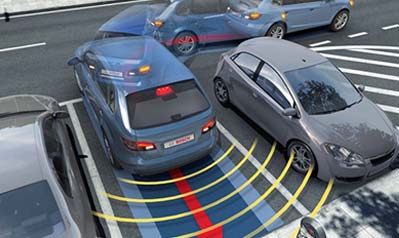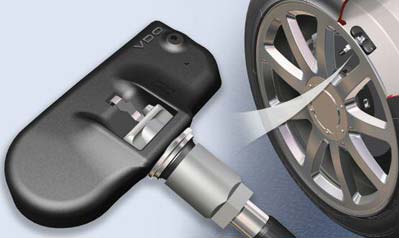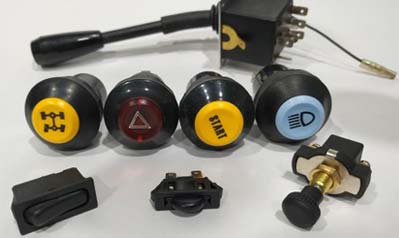Welcome to May Auto Parts Manufacturing & Supplying (MAPMS)
Welcome to May Auto Parts Manufacturing & Supplying (MAPMS)
We all know that there are four filters on the car, namely the oil filter, the automobile air filter, the air filter and the fuel filter. You are familiar with oil filters, which are changed every time you service them. The presence of the fuel filter is very low, and many people don't even know where it is installed. Today we will talk about what role this fuel filter does, when it should be replaced, and what needs to be paid attention to when replacing it.
The automotive fuel filter is commonly known as "fuel filter element". Its main function is to filter the mechanical impurities, gums and moisture in gasoline, provide clean gasoline to the engine, and also store a small amount of gasoline to prevent the car from using a large amount of oil in a short time. In addition, it can buffer the pulsation of gasoline pressure and stabilize the fuel system pressure. Fuel filters are divided into two types: built-in and external. The built-in type is installed in the gasoline tank and before the gasoline pump inlet, and is generally combined with the gasoline pump; the external type is generally installed under the car chassis, but the external type generally has a filter before the gasoline pump inlet. It can filter relatively large particulate impurities, which is essentially a secondary filtration.
The structure of the car fuel filter is very simple, that is, a metal shell wraps a filter element inside. The metal casing is generally made of aluminum, which is light in weight and has a good anti-corrosion effect. It is machined with an oil inlet, an oil outlet and an oil return port. The filter element is generally folded with microporous filter paper, mounted on a stainless steel bracket in a chrysanthemum shape, and the two ends are sealed with resin glue. Microporous ceramic or cotton yarn is also used as the filter element. Its working principle is also very simple. Gasoline enters from the oil inlet, and then penetrates from the outer surface of the filter paper to the inner surface. During this process, impurities and colloids with larger particles remain on the outer surface of the filter paper. The clean gasoline flows from the inner surface of the filter element into the oil outlet and is sent to the engine for combustion. For the fuel filter element with oil return function, there is also a pressure limiting valve inside. When the fuel supply pressure exceeds the pressure specified by the automotive fuel system parts, the pressure limiting valve is opened, and the excess fuel is returned to the gasoline tank.
The fuel filter has several important parameters. One is the filtration accuracy, which is determined by the size of the pores of the filter paper. Generally, particles with a diameter greater than 0.01mm are not allowed to pass through the filter paper. Some models have higher filtration accuracy, reaching 0.005. mm, the filtration accuracy of direct injection in the cylinder is generally higher than that of multi-point EFI; the second is the dust holding capacity, which determines the service life of the fuel filter element, the higher the dust holding capacity, the longer the service life; the third is the pressure bearing capacity , The ordinary multi-point EFI fuel filter element can withstand the pressure of 2~4bar, and the fuel filter element with direct injection in the cylinder can withstand the pressure of 4~6bar, and the two are not interchangeable. In addition, there are flow, original resistance, filtration efficiency, etc.
So how often should the fuel filter be replaced? This is mainly related to the quality of the fuel. The higher the quality and the purer the gasoline, the longer the fuel filter element will be used. The dust holding capacity of the fuel filter element is also a very important factor. Obviously, the larger the dust holding capacity, the longer the fuel filter element can be used. Generally speaking, the external fuel filter should be replaced at about 20,000 kilometers, and the built-in fuel filter should be replaced at about 60,000 kilometers. Of course, this is not an absolute time limit, it can fluctuate up and down according to the actual situation. When the car accelerates slowly and accelerates suddenly, the first thing to suspect is that the fuel filter element is blocked. In addition, after a car that has used pure gasoline for a long time, after replacing it with ethanol gasoline, due to the strong cleaning effect of ethanol gasoline, the colloid and dirt deposited in the fuel tank will be cleaned, which will easily block the fuel filter element.
The replacement of the fuel filter element is relatively simple. For the external type, it is generally installed under the chassis. Just lift the car up and remove the connecting oil pipe and fixing screws to replace it; for the built-in type, it can be replaced. It is installed in the gasoline tank and combined with the gasoline pump. It is difficult to replace it alone. In many cases, it is replaced with the gasoline pump. It should be noted that the fuel filter element should be depressurized to the fuel system before being replaced to avoid gasoline splashing around when the fuel pipe is disconnected; and it should be replaced in a cold car state to prevent gasoline from splashing on the hot exhaust pipe.
There is also a special point to pay attention to: the external fuel filter element has a direction, and there are usually signs such as "IN", "OUT" or "→" on it. Don't make a mistake. If the installation is wrong and the oil inlet and outlet are reversed, gasoline enters from the oil outlet, and the filter paper will be pushed open from the inside to the outside, resulting in damage to the fuel filter element and loss of filtering effect. In this case, it is generally not a problem to use it in a short time, but if it is used for a long time, failures such as slow acceleration of the car, fuel injector wear, and blockage may occur.
Popular Automotive Spare Parts
 Airbag Pressure Sensor: The "Perception Hub" of Automotive Safety Systems
READ MORE >
Airbag Pressure Sensor: The "Perception Hub" of Automotive Safety Systems
READ MORE >
 Car Sonar Sensor: Safe Environmental Perception
READ MORE >
Car Sonar Sensor: Safe Environmental Perception
READ MORE >
 How to Determine if the Ignition Switch Is Faulty?
READ MORE >
How to Determine if the Ignition Switch Is Faulty?
READ MORE >


